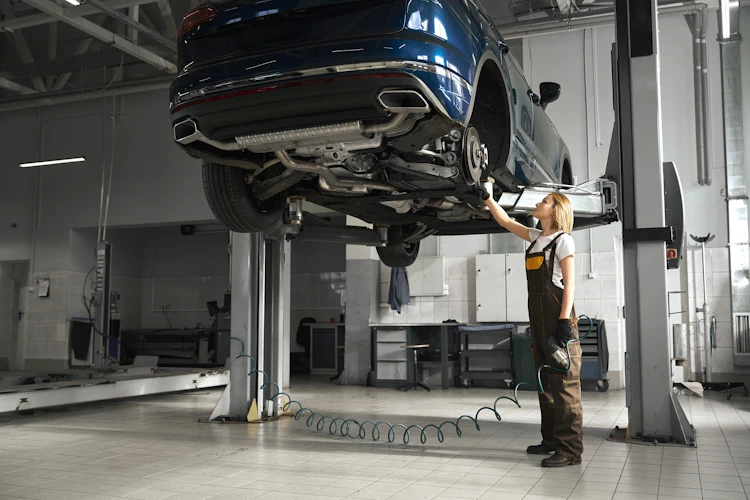Embarking on the journey of installing a lift kits on your Hilux is an exciting prospect, promising enhanced performance and a more rugged appearance. However, like any automotive modification, lift kit installations come with their unique set of challenges. In this guide, we’ll explore common hurdles enthusiasts face during the installation process and provide practical solutions to ensure a successful and smooth lift kit installation.
Challenge: Misalignment Issues
During and after the lift kit installation, misalignment problems may arise. This can lead to uneven tire wear, steering issues, and compromised vehicle stability.
Solution: Professional Wheel Alignment Engage the services of a professional mechanic for a comprehensive wheel alignment after the lift kit installation. A skilled technician will ensure that your Hilux’s wheels are properly aligned, addressing any misalignment concerns.

Challenge: Suspension Noise and Vibrations
Some users experience unwanted noises or vibrations after installing a hilux lift kit, which can be attributed to improper installation or incompatible components.
Solution: Proper Torque and Component Compatibility Ensure all components are torqued to manufacturer specifications during installation. Additionally, verify that the lift kit components are compatible with your Hilux model to prevent unnecessary vibrations. If issues persist, consult with a professional for further assessment.
Challenge: Driveline Angles and Vibration
Lift kit installations can sometimes alter driveline angles, leading to vibrations and potential damage to drivetrain components.
Solution: Adjustable Driveline Components Opt for a lift kit that includes adjustable driveline components. These components allow for fine-tuning of driveline angles, minimizing vibrations and ensuring smooth operation. Professional installation is recommended for precise adjustment.
Challenge: Brake Line and ABS Wire Length
The lift kit may result in stretched brake lines and ABS wires, impacting their effectiveness and potentially causing damage.
Solution: Extended Brake Lines and ABS Wire Kits Invest in extended brake lines and ABS wire kits specifically designed for lifted vehicles. These kits provide the necessary length, ensuring proper functionality while accommodating the lift.
Challenge: Sway Bar Interference
In some cases, the lift kit may interfere with the sway bar, affecting suspension travel and overall performance.
Solution: Extended Sway Bar Links Address sway bar interference by installing extended sway bar links. These components provide the additional length required to accommodate the lift, preventing any negative impact on suspension travel.
Challenge: Rust and Corrosion
The installation process may expose certain components to the elements, potentially leading to rust and corrosion over time.
Solution: Corrosion Protection Measures Apply corrosion-resistant coatings or sprays to vulnerable components during installation. Regularly inspect and maintain these areas to prevent rust from compromising the integrity of the lift kit.
Challenge: Difficulty in DIY Installation
DIY enthusiasts may encounter challenges due to the complexity of the lift kit installation process, leading to frustration and potential errors.
Solution: Professional Installation or Thorough Research Consider professional installation if you lack experience or confidence in handling complex automotive modifications. Alternatively, invest time in thorough research, consulting installation guides, forums, and seeking advice from experienced individuals.
Conclusion
While installing a lift kit on your Hilux can pose challenges, each hurdle can be overcome with careful consideration, attention to detail, and, if needed, professional assistance. By addressing alignment issues, minimizing vibrations, extending necessary components, and implementing corrosion protection measures, you can ensure a successful lift kit installation that enhances both the form and function of your Hilux.
FAQs
- Is it possible to install a lift kit at home, or should I seek professional help?
- While DIY installation is possible for experienced enthusiasts, professional help is recommended for those unfamiliar with automotive modifications to ensure a seamless and safe installation.
- How long does a typical lift kit installation take?
- The installation time varies based on the lift kit type, the complexity of the installation, and whether it’s done professionally. On average, it can take anywhere from 4 to 8 hours.
- Can lift kit installations void my vehicle’s warranty?
- It’s essential to check with the vehicle manufacturer, as some modifications may impact the warranty. Professional installation and adherence to guidelines can help mitigate potential warranty concerns.
- Do I need specialized tools for a lift kit installation?
- While basic tools are necessary, certain lift kits may require specialized tools. Check the kit’s installation instructions and gather the required tools before starting the installation process.
- Are there specific maintenance tasks after installing a lift kit?
- Regular inspections of lift kit components, as well as routine vehicle maintenance, are crucial. Check for proper torque, alignment, and any signs of wear or corrosion regularly.